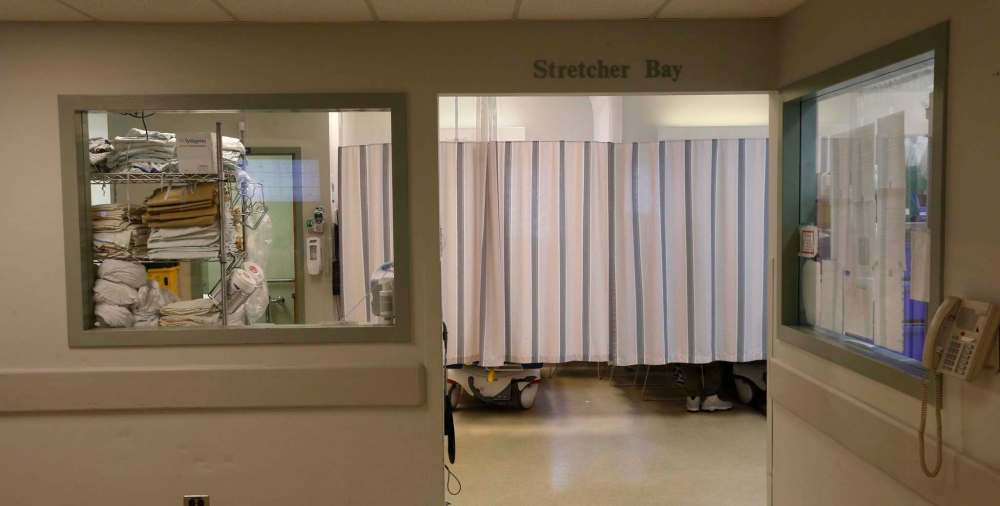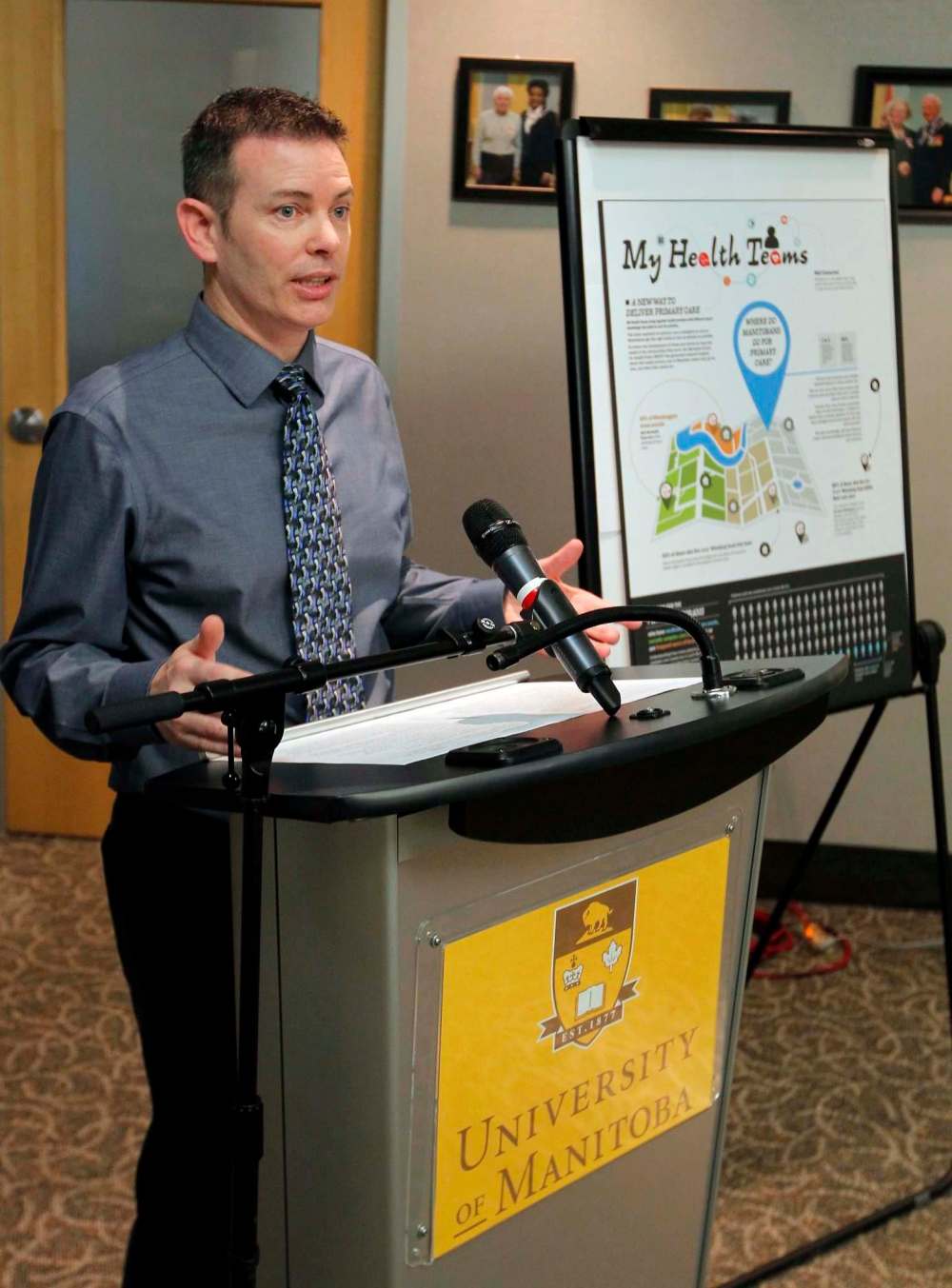Health-care funding should go to where patients go, not to where they live, study suggests
Advertisement
Read this article for free:
or
Already have an account? Log in here »
To continue reading, please subscribe:
Monthly Digital Subscription
$0 for the first 4 weeks*
- Enjoy unlimited reading on winnipegfreepress.com
- Read the E-Edition, our digital replica newspaper
- Access News Break, our award-winning app
- Play interactive puzzles
*No charge for 4 weeks then price increases to the regular rate of $19.00 plus GST every four weeks. Offer available to new and qualified returning subscribers only. Cancel any time.
Monthly Digital Subscription
$4.75/week*
- Enjoy unlimited reading on winnipegfreepress.com
- Read the E-Edition, our digital replica newspaper
- Access News Break, our award-winning app
- Play interactive puzzles
*Billed as $19 plus GST every four weeks. Cancel any time.
To continue reading, please subscribe:
Add Free Press access to your Brandon Sun subscription for only an additional
$1 for the first 4 weeks*
*Your next subscription payment will increase by $1.00 and you will be charged $16.99 plus GST for four weeks. After four weeks, your payment will increase to $23.99 plus GST every four weeks.
Read unlimited articles for free today:
or
Already have an account? Log in here »
Hey there, time traveller!
This article was published 22/11/2017 (2933 days ago), so information in it may no longer be current.
The province should consider shifting some health-care funding from where people live to where they get their primary care — especially for southern Manitobans coming into Winnipeg for care, say the authors of a University of Manitoba report on patient populations released Wednesday.
Forty per cent of Manitobans cross health-care boundaries to see a family doctor, nurse practitioner, or walk-in clinic, while 50 per cent of patients in the Southern Regional Health Authority come into Winnipeg for primary care, said Prof. Dan Chateau of the Manitoba Centre for Health Policy and the study’s lead author.
“There’s a huge influx of people come to the city for health care,” pointed out centre director Prof. Alan Katz. “Should funding go to the Southern Regional Health Authority, (or) should funding go to the provider? This is really good information for planners.”

The study was launched by the former NDP government two years ago, and analyzed data from 2011 to 2014, without identifying patients. It excluded patients seeing specialists, visiting First Nation nursing stations, and patients living in any form of care.
It was intended to help develop a system of groups, called My Health Teams, to offer primary care in local communities. The teams will consist of professionals with a range of skills and knowledge and will be connected either locally or online.
Katz said there is correlation between where people work and where they get their care — some patients from outside the city may work in Winnipeg, where large clinics are clustered downtown.
Within Winnipeg, 45 per cent of patients travel outside their neighbourhoods for primary care, said Chateau.
Meanwhile, one-third of Manitobans rarely see a doctor. This category is primarily middle-aged healthy men.
Some people who don’t go to a doctor should possibly be going, Chateau said, but research has shown an annual physical is not a necessity. “Less than once a year is not unusual for a healthy individual. You don’t go to your physician to say hello,” he said.
Health Minister Kelvin Goertzen said his department is just starting to analyse the U of M research data.
“It’s helpful information, interesting information. It gives us better information of who these people are, how they interact with the system, flow through the system.”
“Data drive decisions in health care.”
Fewer people in Northern Manitoba see a doctor regularly, mainly because of a lack of doctors, Chateau said.
Getting primary care near work will account for some of the patients who cross health authority boundaries, especially those coming into Winnipeg, the researchers said.

Other factors include patients who couldn’t find a physician where they live, patients who had recently moved, or cases where the physician has moved.
“Some of this spoke to a strong patient/physician bond,” he said.
Chateau said researchers found a link between visits and income, with higher-income Manitobans not seeking primary care regularly, and lower-income residents seeking care more frequently or having more numerous and complex medical issues.
However, Chateau said, the people with the most medical needs made up only half of the most frequent visitors to primary care facilities.
“That was a surprise. There could be some suggestion they don’t need to see a physician that often,” he said.
About 13 per cent of Manitobans seeking primary care have three or more social complexities, defined as conditions which present challenges to their mental and physical health, such as low income, social housing, a child in care, teen motherhood or involvement with the justice system. More than one-quarter of those patients are younger than 25, and the highest concentrations of patients live in downtown and Point Douglas.
Chateau said the data show there’s need for further study of the social determinants of health, and the need to include in primary care for some Manitobans access to social workers, dietitians, counsellors and other professionals.
nick.martin@freepress.mb.ca

Nick Martin
Former Free Press reporter Nick Martin, who wrote the monthly suspense column in the books section and was prolific in his standalone reviews of mystery/thriller novels, died Oct. 15 at age 77 while on holiday in Edinburgh, Scotland.
Our newsroom depends on a growing audience of readers to power our journalism. If you are not a paid reader, please consider becoming a subscriber.
Our newsroom depends on its audience of readers to power our journalism. Thank you for your support.
History
Updated on Wednesday, November 22, 2017 5:52 PM CST: full write through adds photo

